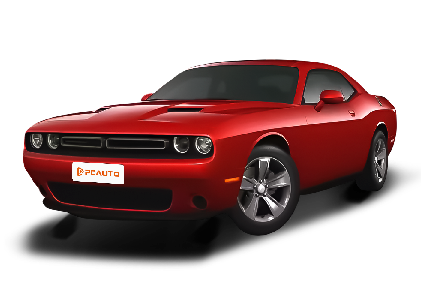Q
Can you put regular gas in a Dodge Challenger?
Regarding whether regular gasoline (RON 95) can be used in the Dodge Challenger, it depends on the engine type of the specific model. In the Malaysian market, the Dodge Challenger mainly offers two engine versions: the 3.6-liter Pentastar V6 and the 5.7-liter Hemi V8. The 3.6-liter V6 engine is designed to be compatible with regular gasoline (RON 95). However, the high-performance versions with 5.7-liter V8 and above (such as the 6.4-liter or the 6.2-liter supercharged Hellcat) require gasoline with a higher octane rating, like RON 97 or 98, to ensure optimal performance and avoid engine knocking.
The gasoline octane ratings (RON) in Malaysia are different from those in the United States (AKI). Therefore, car owners need to refer to the fuel recommendations in the local vehicle manual. Using gasoline with a lower octane rating by mistake may cause premature ignition in the engine, a decrease in power, or long-term damage. On the contrary, using the specified fuel correctly can not only protect the engine but also optimize fuel consumption.
For car owners who pursue performance, it is recommended to regularly check the condition of the spark plugs and the fuel system, as high-compression engines are more sensitive to fuel quality. Also, note that the climate in Malaysia is hot, and the anti-knocking advantage of high-octane gasoline is more obvious in high-temperature environments.
Special Disclaimer: This content is published by users and does not represent the views or position of PCauto.
Related Q&A
Q
Is a Dodge Charger good for traveling?
The Dodge Charger, a classic American muscle car, needs to be evaluated in the context of Malaysia's driving environment when it comes to its performance on long-distance trips. Its spacious cabin and relatively large trunk space (about 370 liters) are suitable for family outings. The abundant power provided by the V6 or V8 engines can handle high-speed cruising. However, it should be noted that the fuel economy of the 3.6-liter Pentastar V6 engine (about 11-12L/100km in the city) under Malaysia's fuel prices may be higher than that of Japanese models in the same class.
The chassis tuning is more sport-oriented, which may affect comfort on some road surfaces in Malaysia. And the rear-wheel-drive (RWD) layout requires cautious driving during the rainy season. It's worth mentioning that in Malaysia's hot climate, the cooling efficiency of its standard-equipped air-conditioning system and optional features such as seat ventilation deserve attention. At the same time, be aware that the peculiarity of the right-hand-drive version may affect maintenance convenience. If you often travel between Singapore, Malaysia, and Thailand, you also need to consider the differences in the supply of parts for American-spec cars among ASEAN countries.
Overall, the Charger is suitable for long-distance travelers who pursue driving pleasure, but you need to weigh the usage cost and local adaptability.
Q
Is a Dodge Charger an economy car?
The Dodge Charger isn't an economy car. Instead, it's a typical American muscle car well-known for its powerful performance and sporty design. Especially in tropical countries like Malaysia, its large-displacement engine and sporty tuning are more suitable for car owners who pursue driving pleasure. Economy cars generally feature high fuel efficiency, low maintenance costs, and practicality. The V6 or V8 engines of the Dodge Charger offer excellent acceleration but consume a lot of fuel, and the maintenance costs are relatively high. So, it's not a cost-effective option for daily commuting. For Malaysian consumers, if they focus more on fuel economy and practicality, they can consider Japanese or Korean compact cars. These cars are usually more popular in the local market and have well-established after-sales service networks. Of course, if you love the unique style and strong power of American muscle cars, the Dodge Charger is definitely a distinctive choice, but you need to weigh its relatively high operating costs.
Q
How many litres per 100km does a Dodge Charger take?
The fuel consumption of the Dodge Charger varies depending on the specific model and engine configuration. Take the common 3.6-liter V6 engine as an example. In city driving, it's about 12-14 liters per 100 kilometers; on the highway, it's around 7-8 liters per 100 kilometers. The combined fuel consumption is roughly between 9-11 liters per 100 kilometers. However, the high-performance 5.7-liter or 6.4-liter Hemi V8 engines consume more fuel. In city driving, it may reach 15-18 liters per 100 kilometers, and on the highway, it's about 9-11 liters per 100 kilometers.
Drivers in Malaysia need to note that fuel consumption is also affected by road conditions, driving habits, and the vehicle's maintenance status. For instance, frequent starting or high-speed driving can increase fuel consumption. Regular maintenance, such as replacing the air filter and tire alignment, helps optimize fuel efficiency.
As an American muscle car, the Dodge Charger, although having relatively high fuel consumption, offers powerful performance and a unique driving experience, which makes it suitable for owners who pursue performance. If you focus more on fuel economy, you can consider hybrid or turbocharged models as they can strike a better balance between performance and fuel consumption.
Q
Is the Dodge Challenger reliable?
The Dodge Challenger, a classic American muscle car, performs above average in terms of reliability. The V8 engine versions like the Hellcat and Demon, despite their impressive performance, have complex structures and high maintenance costs, making them more suitable for car owners who pursue the ultimate driving experience. On the other hand, the entry-level V6 version is relatively hassle-free and more suitable for daily use.
In Malaysia, due to the hot and humid climate, it is recommended to regularly check the cooling system and electronic devices. Also, choose the original or certified repair shops for maintenance to ensure the long-term stable operation of the vehicle. It should be noted that the after-sales network of American muscle cars is not as extensive as that of Japanese cars in the local area, and the waiting time for spare parts may be longer. Therefore, car owners had better plan their maintenance schedules in advance. Additionally, the Challenger has high fuel consumption, which is also a factor to consider in an environment with large fluctuations in fuel prices in Malaysia.
Overall, as long as the Challenger is maintained according to the manufacturer's recommendations, it can offer good reliability. Meanwhile, its unique American style and powerful performance are rare highlights in its class.
Q
What makes a Dodge Challenger special?
The Dodge Challenger is special for several reasons. Firstly, it features a classic American muscle car design. The combination of retro style and modern elements gives it extremely high recognition. In particular, the wide air intake grille, the square body lines, and the iconic four-circular taillights perfectly replicate the soul of 1970s muscle cars, which is highly appealing to Malaysian car enthusiasts who love the nostalgic style.
Secondly, it is equipped with a powerful powertrain. For example, the Hellcat version comes with a 6.2-liter supercharged V8 engine that can output up to 717 horsepower, and the Redeye version even reaches 807 horsepower. This kind of wild performance enables it to perform amazingly in straight-line acceleration, making it very suitable for the gradually emerging track culture in Malaysia.
In addition, the Challenger offers a variety of configuration options, ranging from the entry-level V6 to the high-performance SRT series, meeting the needs and budgets of different car owners. It's worth mentioning that its interior is also full of the atmosphere of a muscle car. A large amount of soft materials and metal decorations are used, and modern technological configurations such as the Uconnect infotainment system are included, balancing classic style and comfort.
In Malaysia, although American muscle cars are relatively niche, the Challenger still attracts a group of loyal fans with its unique personality and powerful performance, especially among those car enthusiasts who pursue a distinctive driving experience.
Q
Is a Dodge Charger petrol or diesel?
The Dodge Charger is an American muscle car primarily powered by gasoline engines. Currently, the models available in the Malaysian market are typically equipped with a 3.6-liter Pentastar V6 or a 5.7-liter Hemi V8 gasoline engine, and there's no diesel version offered. This car is highly popular among car enthusiasts for its powerful performance and classic American design, and it's especially suitable for Malaysian consumers who are fond of high-displacement performance cars.
It's worth noting that while diesel vehicles are quite common in some vehicle types in Malaysia, such as pickups or SUVs, models like the Charger that emphasize sporty performance usually prefer gasoline engines. This is because gasoline engines offer better power response and a more appealing exhaust note at high RPMs, which aligns better with their sporty positioning.
If you're thinking about buying an American muscle car like this, it's advisable to also keep an eye on Malaysia's fuel supply situation and road tax policies, as high-displacement engines may lead to relatively high operating costs. Additionally, with the development of electric vehicle technology, there might be electric versions of muscle cars in the future, which could potentially change the market landscape of traditional fuel-powered muscle cars.
Q
How many cc is a Dodge Challenger?
The displacement of the Dodge Challenger varies depending on the specific model and engine configuration. Currently, the common versions in the Malaysian market are mainly equipped with a 3.6-liter Pentastar V6 naturally aspirated engine (about 3600cc) or a 5.7-liter Hemi V8 engine (about 5654cc). The high-performance Hellcat series is equipped with a 6.2-liter supercharged V8 engine (about 6166cc), and the top-spec Demon 170 even reaches a 6.2-liter hyper-charged version (about 6166cc).
For Malaysian car enthusiasts, it should be noted that the locally imported models may be restricted by tax and environmental protection regulations. Usually, the 3.6-liter or 5.7-liter versions are the main ones. This kind of large-displacement American muscle car belongs to a niche market locally, but the unique V8 engine sound and rear-wheel-drive handling culture still attract many enthusiasts.
In addition, although the displacement (cc) directly affects the power output, modern turbocharging technology enables smaller-displacement engines to generate higher horsepower. For example, the 3.6-liter V6 of the Challenger SXT can output 305 horsepower, while the 5.7-liter V8 with active cylinder management technology strikes a balance between fuel economy and performance. It is recommended that interested consumers confirm the specifications available for sale in Malaysia through official channels and also pay attention to the adaptability of the right-hand-drive version and after-sales support.
Q
How much fuel does a Dodge Challenger use per 100km?
The fuel consumption of the Dodge Challenger varies depending on the model and engine configuration. Taking the common 3.6-liter V6 engine as an example, its combined fuel consumption is approximately 10-12 liters per 100 kilometers. For the high - performance 5.7-liter V8 or 6.4-liter Hemi engine versions, the fuel consumption may reach 14-16 liters per 100 kilometers. In the case of the top-of-the-line 6.2-liter supercharged Hellcat model, the fuel consumption may even exceed 18 liters per 100 kilometers. Malaysian consumers should note that although these American muscle cars have powerful performance and classic styling, their high fuel consumption may result in relatively high operating costs in the local fuel price environment. It is recommended to make a choice based on your daily driving needs.
In addition, fuel efficiency is also affected by driving habits, road conditions, and maintenance status. Aggressive driving or frequent starting and stopping can significantly increase fuel consumption. Regular maintenance, such as replacing the air filter and spark plugs, helps optimize fuel economy. If you have requirements for balancing performance and energy conservation, you can pay attention to the newer models equipped with cylinder deactivation technology. This type of engine will automatically shut down some cylinders during low-load conditions to save fuel.
Q
Do challengers waste a lot of gas?
The Dodge Challenger, a classic American muscle car, doesn't have as good fuel economy as ordinary family sedans. Especially in versions equipped with large-displacement engines (such as the 5.7L HEMI V8 or 6.4L SRT), the fuel consumption in the urban area can reach 15-18L per 100km, and it's about 10-12L per 100km during highway cruising. Compared with the mainstream 1.5L-2.0L turbocharged models in Malaysia (with an average fuel consumption of 6-9L per 100km), this is indeed relatively high. However, it should be noted that its positioning is a performance car rather than an energy-efficient one.
The key factors affecting fuel consumption include driving habits (frequent rapid acceleration will significantly increase fuel consumption), the vehicle's maintenance status (such as insufficient tire pressure or carbon deposit problems), and the common congested road conditions in Malaysia. If you mainly drive short distances in the urban area, the fuel consumption will rise further.
For users who like muscle cars but are concerned about fuel consumption, they can consider the 3.6L V6 version of the Challenger (with a combined fuel consumption of about 11-13L per 100km) or the hybrid models. Meanwhile, regular maintenance, using engine oil with the appropriate viscosity, and reducing idling time can also optimize fuel efficiency.
The relatively low oil price in Malaysia may ease part of the usage cost. But it is recommended that performance car enthusiasts weigh the relationship between power and fuel consumption according to their actual needs.
Q
Are challengers V6 or V8?
The Dodge Challenger offers two engine options: V6 and V8. The specific configuration depends on the model version. The entry-level models like the SXT and GT are equipped with a 3.6 - liter Pentastar V6 engine, which is suitable for users who prioritize daily driving and fuel economy. On the other hand, high-performance versions such as the R/T, Scat Pack, and Hellcat come with Hemi V8 engines with different tunings ranging from 5.7 liters to 6.2 liters. In particular, the Hellcat model also offers a supercharged version, delivering even more powerful performance.
In the Malaysian market, due to the tax policies, the prices of large-displacement V8 models are relatively high. However, there are still many car enthusiasts who are fond of their classic American muscle-car style and the roaring engine sound. The V6 version, with its moderate displacement and good fuel economy, is more suitable for daily use.
It should be noted that the entire Challenger lineup features a rear-wheel-drive layout, so drivers need to be cautious on slippery roads. Additionally, in Malaysia's hot climate, it is recommended to regularly check the cooling system to ensure the engine runs efficiently. Moreover, American muscle cars are a niche in the local market. For maintenance and repairs, it is advisable to choose authorized or professional shops to get support for original parts.
Latest Q&A
Q
How big is Myvi fuel tank?
As one of the most popular national cars in Malaysia, the fuel tank capacity of the Perodua Myvi varies according to different generations and versions. The standard fuel tank capacity of the current third - generation Myvi (from 2017 to present) is 36 liters. It features a lightweight resin fuel tank design, which balances the fuel storage needs and the vehicle's body weight.
The fuel tank size of this B - segment model matches the fuel economy of its 1.3L/1.5L engines. It can provide a cruising range of approximately 450 - 550 kilometers under combined driving conditions, making it suitable for urban commuting and short - distance trips. It's worth noting that the actual available fuel tank capacity might be slightly less than the nominal value. This is because about 5% of the tank space is reserved for fuel expansion as a safety measure.
For owners planning long - distance drives, it is recommended to use the fuel efficiency display function on the Myvi's dashboard to monitor fuel consumption in real - time. Also, it's advisable to develop the habit of refueling when the fuel gauge shows that there is about 1/4 of the fuel left. This can prevent the fuel pump from overheating and also help deal with the situation where gas stations are far apart in some remote areas of Malaysia.
Some comparable models in the same segment, like the Proton Iriz, have a 40 - liter fuel tank. However, the actual cruising range needs to be considered in combination with the engine efficiency. Thanks to Perodua's mature powertrain tuning, the Myvi always maintains a competitive edge in terms of fuel economy.
Q
Does Myvi use CVT?
Yes, the Perodua Myvi does use CVT (Continuously Variable Transmission) technology in some models, especially the newer ones. For instance, the third-generation Myvi, launched in 2017, and its subsequent versions are equipped with D-CVT (Dual Mode Continuously Variable Transmission) to offer a smoother driving experience and better fuel efficiency. CVT technology optimizes engine performance through continuously variable gear ratios. Compared with traditional automatic transmissions, it can adapt to driving conditions more flexibly, thereby enhancing overall driving comfort. However, earlier Myvi models may have used a traditional 4-speed automatic transmission. So, whether a specific model is equipped with a CVT needs to be confirmed based on the model year and configuration. For Malaysian consumers, the advantages of CVT lie in its smoothness and fuel - saving performance during city driving, which is very suitable for the common local traffic conditions. But if you're looking for more direct power feedback, some drivers may prefer the manual transmission version. If you're considering buying a Myvi, it's recommended to check the official specifications or consult a dealer to confirm the transmission type. You can also take a test drive to see if the actual performance of the CVT meets your driving preferences.
Q
What kind of gearbox is Myvi?
The Myvi is equipped with a Dual Mode CVT (D-CVT) transmission, which is a dual-mode continuously variable transmission. Compared with traditional CVT transmissions, it has an additional gear for high-speed driving, which helps the vehicle achieve better fuel efficiency.
In daily driving, this transmission drives the vehicle in CVT mode. Thanks to the operation of the steel belt, the vehicle moves smoothly and linearly, enhancing comfort. What makes the D-CVT special is that it automatically switches to the gear mode when driving at high speeds. Different from CVT transmissions of other brands, when driving at high speeds, the engine speed of vehicles with ordinary CVT transmissions will increase, the engine noise will get louder, and the fuel consumption will rise. Moreover, the power will decline after exceeding the maximum horsepower speed. However, after the gear of the D-CVT engages, the engine speed decreases, allowing the engine to maintain a reasonable speed and providing the vehicle with continuous and abundant power.
Q
Are Myvi and vios the same engine?
Some models of the Myvi and the Vios use the same engine. Daihatsu and Perodua have a joint - venture engine production plant in Negeri Sembilan, Malaysia, which provides power for multiple models including the Vios. Some models of the Vios and the Myvi are equipped with the 1.5L Dual VVT - i engine. This engine features high efficiency, reliability, and economy. Although its power is not extremely strong (the official 0 - 100km/h acceleration time of the Myvi 1.5 is 10.2 seconds), its low fuel consumption and durability are well - loved by consumers. However, these two cars have different positioning and market targets. Even if they share the engine platform, there are differences in vehicle tuning, configuration, and the overall driving experience.
Q
How many cylinders are in the MYVI?
As one of the most popular national cars in Malaysia, the engine configurations of the Perodua Myvi vary according to different years and versions. Currently, the mainstream models are equipped with two types of Dual VVT - i four - cylinder naturally aspirated engines, namely the 1.3L (1NR - VE) and 1.5L (2NR - VE). Therefore, all Myvi models feature a four - cylinder design. This four - cylinder layout ensures smooth power delivery while taking fuel economy into account, making it highly suitable for the urban road conditions in Malaysia.
It's worth mentioning that four - cylinder engines, due to their simple structure and low maintenance costs, are widely used in B - segment models in the local market. For example, the Proton Saga and Honda City also adopt a similar layout. The 1.5L version of the Myvi can output 102 horsepower and 136 Nm of torque. Coupled with its lightweight body design, it can offer a well - balanced performance whether driving on the congested streets of Kuala Lumpur or cruising on the highway.
For readers who want to learn about engine technology, they can note that the Dual VVT - i system used in the Myvi can intelligently adjust the valve timing. This technology shared by Toyota helps to improve fuel efficiency by about 15%. That's why the Myvi has remained one of the most fuel - efficient cars in Malaysia for years.
View More


















Pros
Cons